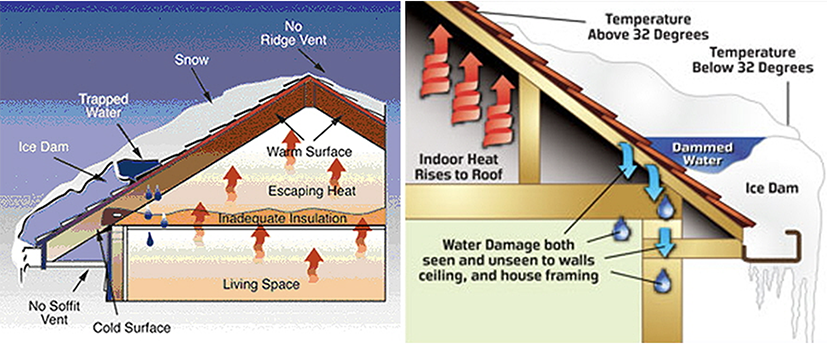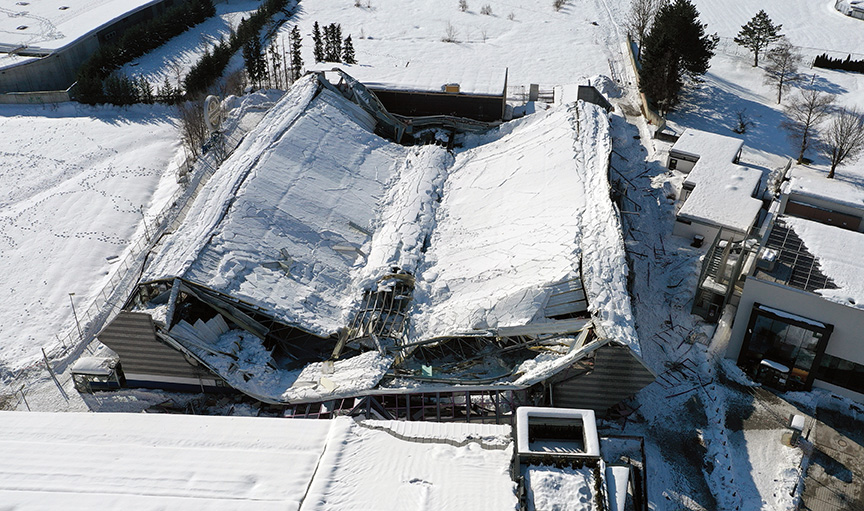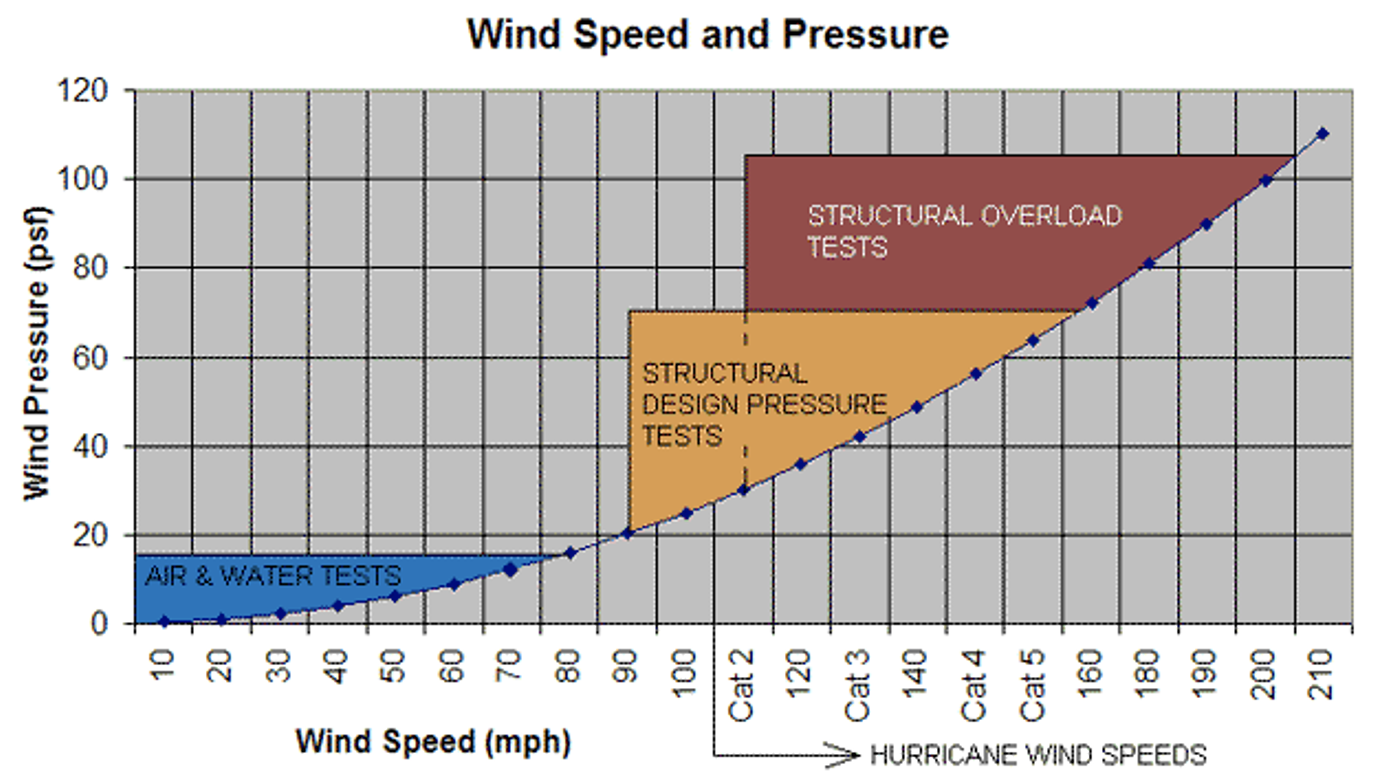Roofs collapse under the weight of snow in New York.
Two feet of snow on a roof can weigh 19 tons. Because of that, emergency rescue crews had to deal with numerous roof collapses across western New York last winter.
The main difference between snow and rain is snow sticks and stays and rain drains. If snow remains on your roof, it is an excellent indication that conditioned air from the interior of the structure is not leaking or escaping through the roof and the resulting energy efficiency of the building is high. A lack of snow on your roof or portions thereof and snow on nearby structures is a sure sign of poor energy efficiency. See below for visual and graphical display of snow melting and water not properly draining.

While snow on the roof is an indicator of good thermal efficiency, it can also be a hazard to the structural stability of a structure. Collapsed roofs are a by-product of weak systems.

Roof collapses due to snow weight.
Closed cell spray polyurethane foam (SPF), when applied in walls, ceilings, floors and on the roof, ranging in densities from 2.0 to 3.5 pounds per cubic foot (PCF), protects the structure from serious and costly damage. It can alleviate concerns of builders, contractors and facility owners due to the increasing number and intensity of severe storms in the United States and the resulting damage that may be incurred to commercial structures.
Water Resistive Barrier & Flood Resistance – When applied in walls, ceilings and floors, FEMA names it a Class 5 material which does not require special waterproofing protection. It may be applied as cavity insulation or as continuous insulation in commercial structures and is the only cavity insulation approved by FEMA with this highest floodwater resistance. When applied under slab as insulation, closed cell spray foam is also flood resistant.
Structural Strength and Wind Resistance – The application of closed cell SPF in above grade walls and roofs increases the structural strength of buildings and assists with wind resistance. When installed, closed cell SPF provides a monolithic structure essentially gluing the assembly together which reduces the potential for movement and adds a tensile strength average ranging from 15 to 25 PSI (2160 – 3600 psf). Special bracing for wind resistance is not required for strengthening purposes when using closed cell spray foam in walls.
Roofing & Wind Uplift – SPF sprayed in densities ranging from 2.5-3.5 PCF is an ideal solution for commercial structures located in hurricane and other high wind prone regions. It forms a durable, monolithic membrane over the roof, gluing it together and to the walls, which enables it to resist severe weather cycling, storms, wind, hail and other conditions that frequently cause damage. SPF Roofing systems when properly applied from 3-6” in depth from the foundation to the roof would offer wind pressure ratings from 1440 – 3500 PSF. See below for comparison of wind speed to equivalent pressure ratings. It also changes little with time and, when properly maintained, lasts 30 years or more. Reapplication of a high quality silicone or acrylic coatings can significantly extend the life of the roofing system.

Note: the very light weight (PCF) of the foam coupled with the monolithic properties and the strong adhesive nature of the foam to produce extremely high strength factors relative to the forces associated with wind speed. The wind pressure ratings of closed-cell foam (2160-3600 psf) are well above snow fall accumulation weights on a SPF Roof System.
Our GreenSeal 2.5 to 3.5 products are the best solution to provide your roof the underlying protection needed from severe cold and snow accumulation.
Read more about our GreenSeal products.


